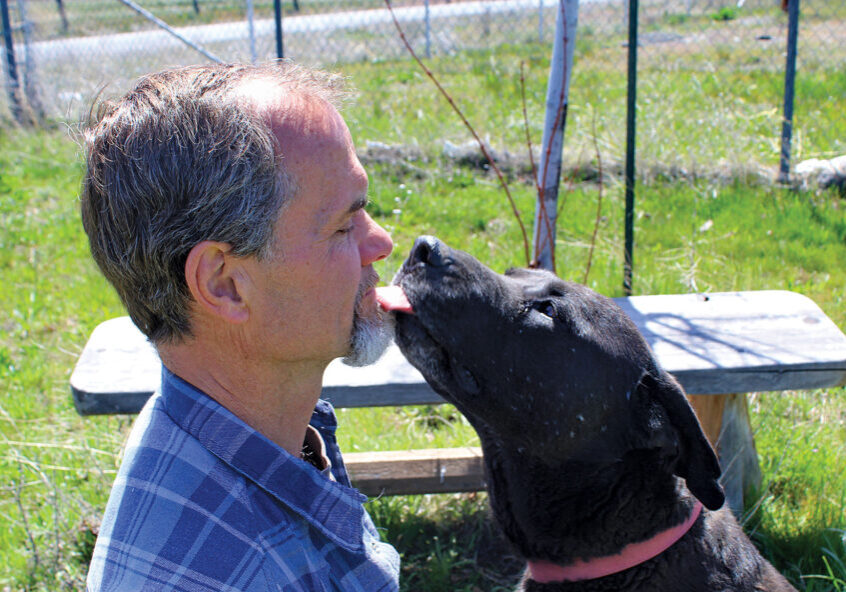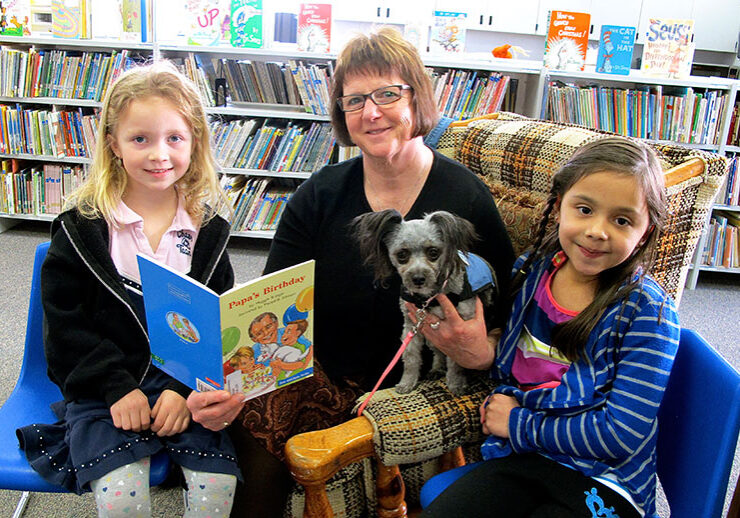 In living with and interacting with our dogs, we get to know them well. Despite their inability to talk, we often understand their emotions based on their body language. But scientists now know what dog owners have suspected all along—dogs experience a wider range of emotions than once thought.
In living with and interacting with our dogs, we get to know them well. Despite their inability to talk, we often understand their emotions based on their body language. But scientists now know what dog owners have suspected all along—dogs experience a wider range of emotions than once thought.
The dog brain is substantially smaller than the human brain when accounting for body size, so it isn’t as complex as our brain, yet MRI studies reveal a dog’s brain isn’t much different from humans. MRIs have revealed the same sections of both the human and dog brain light up to various types of stimuli, according to neurologist Dr. J.P. McCue, at New York City’s Animal Medical Center, in his report “Dog Brain Facts: Understanding Canine Cognition” (petmd.com/dog/behavior/dog-brain-facts-understanding-canine-cognition).
Dogs produce oxytocin, the neurotransmitter and hormone that helps create the emotion of love in humans. In fact, research has found that when our dogs stare into our eyes, it activates oxytocin, creating a bond similar to that between a mother and infant.
David Grimm reports on the research of this phenomenon in his article “How Dogs Stole our Hearts” (sciencemag.org). In an experiment by animal behaviorist Takefumi Kikusui and his colleagues, dogs and their owners gazed into each other’s eyes. Their gazes ranged from a few seconds to a couple of minutes. The researchers found in those dogs and owners who gazed longer the oxytocin levels rose 130% and 300% respectively, adding to the growing body of research that supports the finding that dogs can feel love and attachment.
Just like in humans, dogs’ brains develop as they grow. In humans, the brain reaches full development around the age of 25. But dogs’ brains are fully developed around the age of six months. At this point, a dog’s emotional development is equivalent to that of a toddler, according to researchers.
To gain perspective on what that means regarding a dog’s range of emotions, Stanley Coren, in “What Emotions Do Dogs Actually Experience?” (moderndogmagazine.com) charts the emotions of a two-and-a-half-year-old child. These include joy, love and affection, contentment, excitement, shyness and suspicion, fear, disgust, distress and anger. At that age, however, children don’t experience feelings that require self-consciousness, such as pride, shame, guilt and contempt.
How to read your dog’s feelings
Here are some of the ways that dogs express different emotions.
- Joy. Dogs often express this when a family member comes home, or a familiar guest comes to visit. Dogs often run and jump, wag their tails and lavish kisses. They also express joy when playing by barking or giving a playful bow.
- Love and affection. When dogs are feeling affectionate, they might nudge you with their nose, make affectionate eye contact or make soft groans and sighs while lying next to you. Some dogs will lean their bodies up against you while sitting or standing. They also express their love through kissing, jumping and rolling onto their backs with a wagging tail.
- Shyness, suspicion, fear. These emotions are often quite evident. Dogs might flatten their ears, avoid eye contact, tuck their tail under, cower, pant or shake. They can also have dilated glassy eyes. Pacing, hiding, whining, barking, sneering, nipping, or submissive urination can also be signs of fear or shyness.
- Distress. When dogs are depressed, they can experience changes in appetite, behavior, sleep patterns and reduced activity levels. Emotionally distressed dogs also show this in their posture with downcast eyes and a low bent neck. They might also lick or shed excessively.
- Anger. If your dog has ever ignored you or given you the cold shoulder, there’s a good chance it’s mad at you. But if you’re doing something that makes your dog particularly angry, your dog might take a rigid posture, bark loudly in your direction, or make sharp or short barks. This is a warning to stop whatever you’re doing that’s making your dog angry. If your dog begins growling, repeatedly howling with a rising pitch, or showing teeth, it’s prepared to attack.
What about hackles?
People often think raised hackles indicate a dog is angry or showing aggression. Sometimes that’s the case. But raised hackles are an involuntary reaction and most often caused by a host of other emotions. These include excitement, arousal, fear, shyness, defensiveness or being startled. That said, dogs can bite out of fear, not just anger. The best way to know the meaning behind the raised hackles is to look at other body language that indicates what the dog is feeling.
Posted in: Animals
Comment Policy: All viewpoints are welcome, but comments should remain relevant. Personal attacks, profanity, and aggressive behavior are not allowed. No spam, advertising, or promoting of products/services. Please, only use your real name and limit the amount of links submitted in your comment.
You Might Also Like...

Finding Your Best Pet
When Erica Galligan’s children were young, her family tried adopting a dog, but allergies forced the family to return him to the breeder. They found alternative pets, starting with a […]

For the Love of Animals – Local Teens Celebrate Their Unique Friends
Pets bring joy to many teenagers throughout the North State. Some pets have been rescued from hard situations, but in all cases these pets are an immense blessing to their […]

Children and Adults Find Healing and Connection at Roughout Ranch
“Everyone wants to be heard and to belong,” says Kathy Rutan-Sprague, Program Director at Roughout Ranch, nestled on 15 acres in the foothills just outside Redding. Here, children aged 2 […]

Rescue Ranch: Saving Dogs and Changing Lives
If you, like me, are a dog lover, you’ll want to know about the Siskiyou County no-kill dog shelter and sanctuary, Rescue Ranch. I recently spent a morning at the […]



